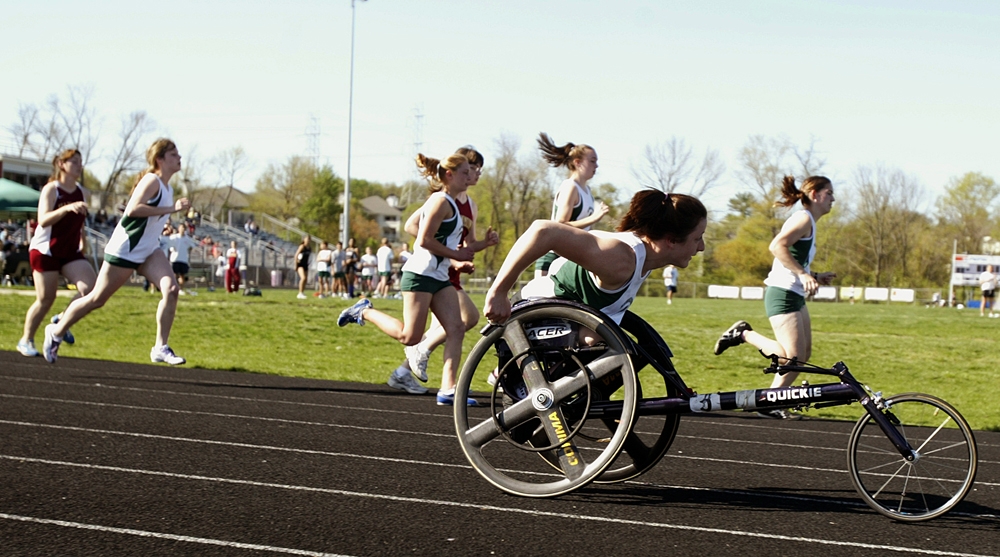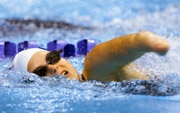By NCHPAD
On January 24, 2013, the Office for Civil Rights (OCR) issued a Dear Colleague Letter clarifying school’s obligations under the Rehabilitation Act of 1973 to provide extracurricular athletic opportunities for students with disabilites. The guidance creates a clear roadmap for how schools can integrate students with disabilities into mainstream athletic programs and create adapted programs for students with disabilities.
“OCR’s guidance is a landmark moment for individuals with disabilities, as it sends a loud message to educational institutions that students with disabilities must be provided opportunities for physical activity and sports equal to those afforded to students without disabilities,” said Terri Lakowski, policy chair of the Inclusive Fitness Coalition (IFC) and nationally recognized sports policy advocate.
You may have seen this announcement in the media or through your organization, but what does it all mean and how will this impact extracurricular athletics?
The road towards victory for student athletes with disabilities was relentless. The letter released by the OCR came after ten years of advocacy to level the playing field in school-based athletic programs. The release of the Dear Colleague letter is merely further guidance on what should already be happening for students with disabilities, based on section 504 of the Rehabilitation Act of 1973. The purpose is to clarify school’s responsibilities under the law; it does not provide any additional legislation. Similar to Title IX, which paved the way for women to have equal opportunities in sports, the updated guidance will hopefully provide a similar effect for student athletes with disabilities.

Above: Wheelchair athelete Tatyana McFadden, front, races in her first high school track meet alongside able-bodied runners, April 2006 in Rockville, MD. Photo courtesy of (Chris Gardner/AP)
Why are these guidelines important? The benefits of providing ALL students with opportunities for exercise and sports participation goes beyond justice and individual opportunity. There is a major epidemic of obesity among our youth and even more so among youth with disabilities.
“Inclusion in athletics is how children learn from each other, build social skills and optimize their growth and development. The OCR guidance is a clear indication that athletics is an extremely important part of our educational system and that youth and young adults with disabilities must be afforded the same opportunities as their non-disabled peers,” said James Rimmer, Ph.D., who co-chairs the IFC and directs the National Center on Health, Physical Activity and Disability. “This should be part of a national strategy to lower obesity rates, which are disproportionately higher among youth with disabilities compared to their non-disabled peers.” By providing equal access in extracurricular activities for students with disabilities, maybe we can begin to break down the common barriers to physical activity, and create a new culture of inclusion in our schools and communities.

To ensure equal opportunity does not mean a fundamental alteration to the program, but simply providing a reasonable modification to allow the student athletes with a disability to participate alongside their peers. The Dear Colleague Letter document outlines what constitutes a reasonable modification. One example is to provide a visual cue at the start of high school track races, simultaneously wtih the starter pistol sound, to be inclusive of students with hearing impairments. Another example of a reasonable modification is to allow an individual born with only one hand to be allowed to finish a swim race with a “onehand touch” as opposed to the “two-hand touch” finish rule for certain strokes. As you can see, inclusion can be a reality in all aspects of physical activity. The message is simple: Prevent Obesity, Be Inclusive.
The IFC, led by the Lakeshore Foundation in partnership with the American College of Sports Medicine, comprises over 200 organizations representing a cross-section of disability rights, sports, health/fitness, and civil rights communities. Recognizing the barriers that continue to limit opportunities for physical activity for individuals with disabilities in the school setting, the IFC works to expand opportunities for physical activity, exercise and athletics for individuals with disabilities. For more information, please visit www.incfit.org and www.lakeshore.org.